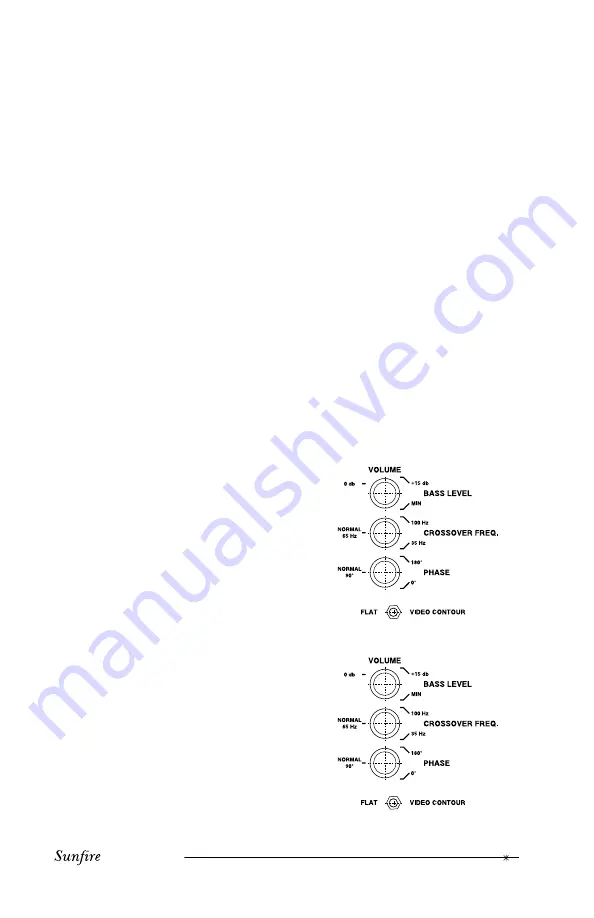
User's Manual
15
There are two main methods for
adjusting the level, crossover frequency
and phase of the Sunfire Subwoofer to
match a system:
•
Bob Carver’s preferred method:
By listening and making the
adjustments to suit your taste.
•
Laboratory method:
By measuring the output and
adjusting for a flat frequency
response.
Excellent results can be obtained if
you make the adjustments based on
simply listening. This is Sunfire’s
preferred method as it allows the system
to be voiced based on what sounds the
best, whereas laboratory-flat frequency
response can often be clinical and less
than exciting.
The following procedure is for those
who prefer a more methodical and
scientific approach. This excerpt is from
“The Audio Critic,” issue 24, page 31,
written by contributing editor David Rich,
and is reprinted here with their kind
permission.
You will need a test CD with low-
frequency warble tones, and a sound
pressure-level meter. The Radio Shack
®
SPL meter will do fine, as will the
Stereophile
®
test CD.
“Step 1. Disconnect the subwoofer
and run the main speaker with a tone in
its passband (80-100Hz). Measure the
level.
Step 2. Disconnect the main speaker
and reconnect the subwoofer. Set the
subwoofer to its highest crossover
frequency. Set the level control of the
subwoofer to give the same sound
pressure level with the same tone you
used in Step 1.
Adjusting the controls
Step 3. With both the subwoofer and
the main speaker connected, measure
the level of the tones at the available
frequencies. Because the crossover is
set too high, you will have a peaked
response. Adjust the crossover control to
get the smoothest response.
Step 4. Use the phase control to make
the response even smoother. It has its
biggest effect at the crossover fre-
quency. You can iterate between the
crossover and the phase controls. Keep
your hands off the level control! It was
set correctly in step 2.
Step 5. Listen to the subwoofer.
Resist all temptations to turn up the level
control. Play something with really deep
bass to confirm that your subwoofer is
working.”
Control settings
Use this drawing to record some of
your favorite settings.
Summary of Contents for Architectural Signature
Page 1: ......






































